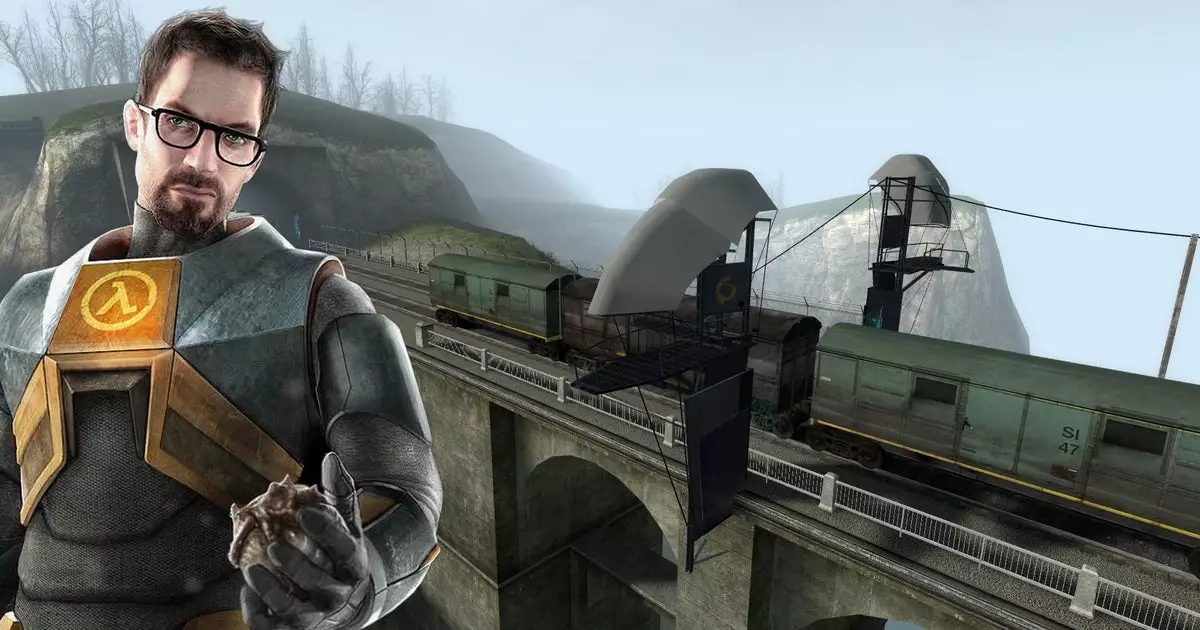In an age where video games often seem to age faster than their developers can support, Valve’s recent small update to *Half-Life 2* exemplifies a profound commitment to maintaining historical integrity and player experience. Supplementary tweaks—like restoring the speed of a train in the iconic “Highway 17” level—might appear trivial at first glance, but they symbolize a deeper philosophy: the importance of honoring the original design and ensuring a seamless connection across decades. Such modest enhancements transcend mere bug fixes; they reaffirm that classic games remain living entities, deserving ongoing care. These efforts evoke a recognition that longevity isn’t just about marketing nostalgia but actively nurturing the foundation on which modern gaming stands.
This particular update restores the train’s original speed profile, making the successful “game of chicken” possible once again. While it might seem a small adjustment, it stirs a sense of rediscovery—reminding players that their initial experiences were crafted with intent. It’s not merely about fixing broken physics or awkward collisions but about respecting the nuanced challenges the creators originally intended. These incremental updates, few as they may be, act as bridges connecting the players of yesterday with the enthusiasts of today, preserving the delicate balance of challenge and storytelling that make *Half-Life 2* timeless.
Rekindling the Spirit of Engagement in Age-Old Classics
What makes these slight refinements compelling is their ability to rekindle player interaction with old favorites. And often, the games’ community members are the most passionate advocates for such updates. The fact that players can once again outmaneuver the train—not just by strategy but with the same confidence they felt two decades ago—restores a sense of mastery and engagement unique to original gameplay. These minor changes turn into a sort of technological and aesthetic homage, offering fresh yet familiar experiences.
Detecting and correcting minor glitches—such as NPCs shooting through walls or ensuring Alyx’s path isn’t obstructed—may seem insignificant. However, they reflect a wider philosophical stance. Instead of discarding or remaking these titles, developers like Valve choose to treat them as living works, deserving of continual refinement. This unwavering dedication pushes the boundaries of what remastering or re-releasing truly means. It’s not about superficial visual upgrades but about embracing the legacy, fine-tuning it, and allowing the game’s essence to flourish anew.
The Role of Caretakers in the Preservation of Video Game Heritage
Imagining a solitary “caretaker” at Valve, diligently working behind the scenes on a game that’s two decades old, might seem humorous or even quaint. But this image embodies a vital truth: preserving the integrity of classic titles is often overlooked in the fast-paced industry. These unseen keepers of history—whether actual employees or passionate community members—are the guardians who ensure that old glitches don’t become insurmountable barriers or that nostalgic moments remain playable.
Their work might involve removing invisible walls that hinder speedrunning or fixing collision issues that marginally impact gameplay. While their efforts are microscopic in the grand commercial scheme, they have enormous cultural significance. They affirm that games are more than just products—they are artifacts worthy of respect and preservation. Each fix, no matter how minor, demonstrates a respect for players’ shared history and a desire to keep the original experience accessible for future generations.
Through these continuous, almost surgical adjustments, developers reinforce the concept that classic games are living histories—continuously curated, never abandoned. The act of maintaining these titles becomes a labor of love, often unrecognized, but undeniably vital to the ongoing cultural conversation surrounding gaming’s evolution. These updates challenge the notion that old games are relics—rather, they are enduring monuments, constantly nurtured to remain relevant and enjoyable.
—
This approach to revisiting classics speaks volumes about our broader relationship with digital history. It underscores that, beyond the shiny new releases flaunted in headlines, there is a dedicated effort to preserve and celebrate what made early titles groundbreaking. It’s a reminder that in gaming, as in art, true appreciation often lies in subtlety, patience, and respect for the craft. Valve’s small yet meaningful updates serve as a testament to a profound belief: that even after more than two decades, old games still have stories to tell and experiences to offer—and it’s our responsibility to keep those stories alive.


Leave a Reply